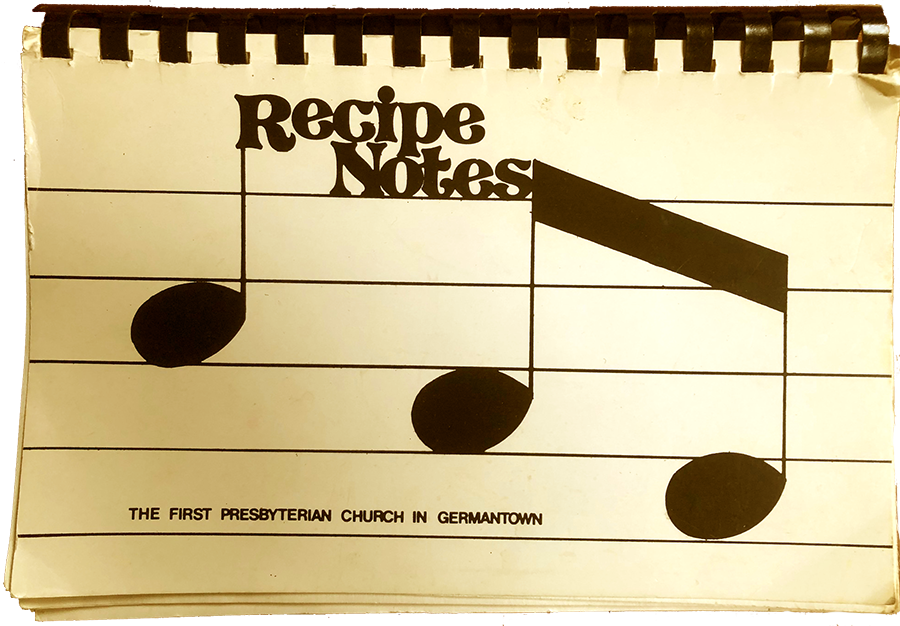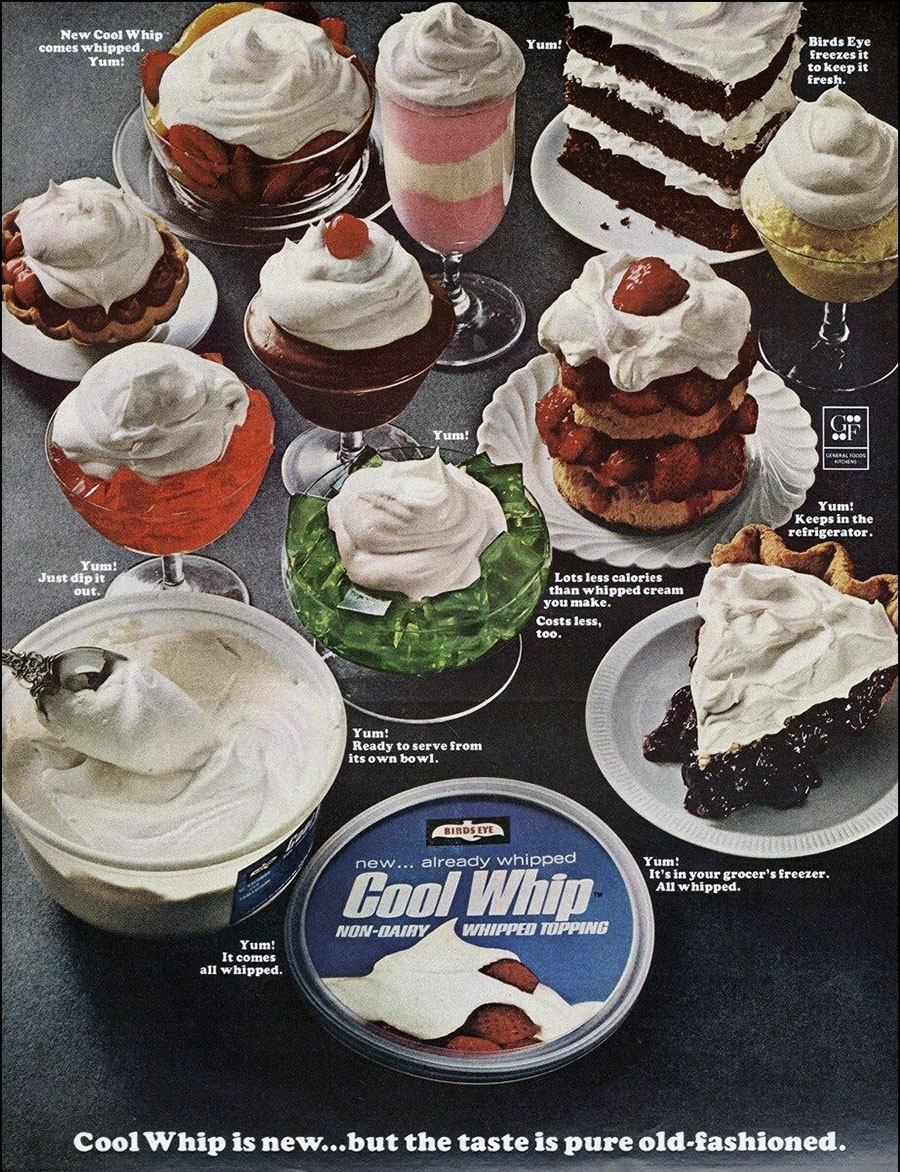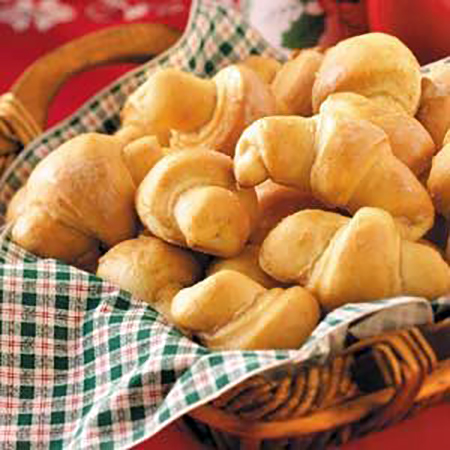Divine Offerings: A Testament to the Diversity of Finds in the PHS Cookbook Collection

Starting to stress with regard to what you will cook for the upcoming holidays? Are you looking for an assortment of appropriate recipes to send along from a safe social distance, as thoughtful, pandemic-period gifts to foodie friends, vegans, or relatives with particular culinary tastes or dietary concerns? Perhaps, you are just an “adventurous” eater, someone who loves a level of cuisine kitsch. Might you be a person with a penchant for winter-themed alcoholic beverages? Maybe, you are a scholar looking for a great cultural studies topic to fulfill your end-of-the semester term-paper needs, or an artist, seeking inspiration in 20th Century culinary spreads?
Well, look no longer! Worry no more!
The Presbyterian Historical Society's (PHS) recipe book collection—consisting of around 100 different titles, spanning from the mid-to-late 19th century, and running through the end of the 20th century—has you covered. Cover-to-cover, literally.

When I first flipped open the buttercream-colored, glossy cardstock cover of Recipe Notes, in order to catalogue it for the library collection, I never expected to find my curiosity piqued. Never, when I stood tall at my desk and first paged through this inch-thick book with its black plastic spiral binding, did I believe that I’d keep the book “checked out” and sitting on my Easter-egg-purple library cart for a few weeks more. No, never could I have imagined that I would soon become so intrigued by the allotment of cookbooks in the PHS collection that I would come to share about them in a short blog post.

I was in for a treat! Hiding within the ageing, seldom-turned pages of Recipe Notes and two intuitional-green shelves’- worth of other cookbooks in the PHS stacks waited a diverse, culinary-themed collection that speaks to a variety of interests and questions, including scholarly inquiries about cuisine choices and foodways; questions about the changing senses of both humor and goûte within culture; queries about how to make vegetarian, vegan, or other “special-diet-friendly” versions of traditional recipes; inquiries about the art of table setting and dish design; nostalgic twinges; glimpses into cuisines from around the world; a thirst for a “happy hour” drink; questions regarding ingredients and whether certain food products are still being produced by manufacturers, today; and—well, let me be honest—questions about the palatability of some of the “tried and true” recipes chosen for inclusion.
Yes, I would soon find a bountiful array of offerings—all set to satiate (or upset) the stomach, and each sure to feed any creative or inquisitive soul.
I now invite you over for a virtually curated feast of the cookbooks, and their contents, which you might not have expected PHS to have.
“Salad Days”: Not So Appetizing Appetizers and Desserts to “Pass On”
Let’s start with the unsavory—or perhaps the “unappetizing,” at least according to what some might consider to be my picky palate!
Sure, plenty of questionably delectable dishes abound in cookbooks the world round, from all eras. Yet, below are a few of my personal, Presbyterian-community-focused, favorites—highlighted for either their kitsch value or their ability to elicit gastronomic grimaces.

First on my list—and surely the all-time winner for turning (me) a bit green—is a recipe for “Shredded Lettuce in Cream.” Might this sound strange to you, too? We are not to judge, right? (Or can we judge, just a little, with our epicurean tastes of 2020?). Why, indubitably, it is a truly “simple” recipe, well worth someone’s try…. maybe, just not mine.
I am not sure about you, but even were I not an ovo-vegetarian, I would never be inclined to eat liver—neither in any disguise nor served on any variety of cracker.
And last but surely not least:
Tang? Now there’s a blast of taste from my ‘80s-childhood past. I cannot claim to have ever been a Tang fan. Neither can I report that I ever knew there to be grapefruit flavored Tang. Orange is all that I recall (not liking). Yet, finding the idea of cookies made with Tang to be far less than appealing is somewhat beside the point. What struck me most about this recipe was that it prompted me to have a conversation with a colleague about the product, Tang. It also motivated us to look up this “foodstuff” to see if it was still being manufactured. It is (although it has been reformulated)![4]

What memories does reading over recipes and their concomitant ingredient lists spark for you? What food products mentioned in cookbooks from different eras might you be prompted to research or discuss with others? Which comestibles or brands were in our respective pantries of twenty years ago that we would not be caught brining into the house today?
What’s Brewing, and other Ambrosial Spirits
I must admit: I am still in the process of learning about Presbyterianism. As an outsider to the faith, I incorrectly thought that Presbyterians—especially those of earlier generations—stood in opposition to “the drink”. Well, the Presbyterian cookbooks held by PHS have exposed my naïveté and served to set me straight (although far from straight edge!). Featured just as prominently within the yellowing pages of Housekeeping in the Blue Grass, an 1878 Ladies of the Presbyterian Church publication, as in Church Mouse Favorites and Recipes of Note (both published in 1981), are instructions for making all and sundry types of drinks worthy of a guzzle, gulp, sip, or swig.

In case you’re looking to make malted bread, feel tempted to brew beer, concoct a tasty alcoholic drink, or are inclined to spice up your next post-pandemic holiday event or birthday celebration, consider one of the recipes below.
“Cheese and Beer Wheat Bread”
Nearly 150 years later, these recipes are still set to pack a punch:
"Beer"
Two quarts of wheat bran, two and a half gallons of water, a few hops, one pint of molasses, and one pint of yeast. --Miss Kate Spears.[5]
"Whisky Punch"
One gallon of whisky, six tumblerfuls of sugar and one half dozen lemons[6]
"Egg Nog"
Six eggs, beaten separately; one pound of sugar, two pints of rich cream, one pint of whisky, one half pint of Jamaica rum; beat the yelks well; mix sugar and whisky together; whip the cream; add whites of eggs and cream last. Reserve a little whisky and cream for the next morning. It is best made overnight.--Mrs. Jonathan Owen7]
Moreover, if you enjoy a glass of wine and are also into local foraging--or are otherwise into working with plants and herbs--PHS again has you covered. Consider the following:
“Whip it, Whip it good”… Or Maybe Just Mould It Into Shape
Perhaps, it is no coincidence that in the 1980s the band, Devo, wrote a popular song in which the singer makes passing mention of whipping cream. American cookbooks from the 1960s through the 1980s offer an array of options for either heaping whipping cream, or the preferred Cool Whip, onto or into everything--from what are termed “salads”, to more recognizable deserts. Moreover, these cookbooks feature bountiful options—some with “enticing” color photographs--for meat-and seafood-filled appetizers and entrees, as well as “salads” and desserts, all moulded into an array of shapes, thanks to the wonders of gelatin.

Two of my most curious, although not so appetizing finds in the whip topping and moulding categories include:


I can’t say I ever recall sitting down to a table spread of gelatin-moulded fare (perhaps, fortunately—or maybe I just don’t know what I missed and plan to continue missing, today). I can, however, claim to have grown up during an era when Cool Whip or whip cream-topped delectables were made and presented for consumption at parties and school events.
While the sentiment of nostalgia doesn’t really suit my experience in these aforementioned cases, a perusal of recipe books surely can evoke nostalgia in the minds of others. What recipes might you find in PHS's cookbook collection that will harken memories of halcyon days of childhood? Which of the recipes in our collections might make you nostalgic for a certian location, or for the company of freinds or family?
The Aw[e]ful “Joy [and art] of Cooking”
The artist and foodie at my core was struck with both joy and aw[e]ful incredulity surrounding many of the offerings—however inedible many of the displayed food items appear—presented in the various cookbooks. To add to the selection of visuals were many helpful “How To” illustrations—including the likes of “How to Carve a Leg Of Lamb”—and “Handy Chart[s]” for measuring, substituting ingredients, and making candies. There, too, were lists outlining the main properties and culinary uses of spices and herbs. Then, there were the illustrations featuring “practical seating arrangements” for buffets and dinner parties, along with sketches of the various flatware found in traditional, Western-world dining rooms.
For your enjoyment and edification, as much as for mine, feast your eyes on a few of the aformentioned, below:




International Cuisines: Tasty Treats and Delectable Dishes Set to Satiate the Palates of the 2020 "Armchair Traveler"
As an avid world-traveler and someone who lived for several years in Scandinavia, I was thrilled to find a smattering of “International” recipes punctuating the pages of a selection of cookbooks in our collections. I was equally interested by the rather oddly titled (by today’s standards) but nevertheless intriguing 1970s publication, Cooking, Third World Women, which features the recipes of “Asian, Black, Native American, and Latina Women.” Perusing these various cookbooks gave me pause to wonder whether or not the contributors of the recipes were actually members of minority groups, first- or second-generation immigrants, or individuals whose heritage otherwise linked directly with the recipes they contributed.

Unequivocally, we all come with recipes passed down to us by our relatives and community members—either in the form of actual instructions for making beloved, tantalizing dishes, or memories of eating, sharing, or maybe being forced to sample a not-so-appetizing, but prized dish presented on special occasions by a family friend or relative.
With the primary idea of holiday baking in mind, below is a selection of recipes that caught my attention. Without question, this selection is influenced by my own international living and travel experiences, along with my thoughts about several of my PHS colleagues and their family origins.
What recipes from the holdings at PHS might stoke your memories, soothe your nostalgic soul, remind you of your grandmother or uncle, or make you think of friends or family in other countries or from different cultural or regional backgrounds? Which recipes might make you long for travel—domestically or internationally?
***


“Ostakaka (Sweden)” ---Translates to Cheesecake!

“Butter Horns” (Switzerland)
***


“Puff-Puff Nigerian Bread"
***

Peddling Elixirs, Historical Tastes, and Crafting “Toys for Tots”
Tried and True Elixirs of Old
I don’t know about you, but I am a huge proponent of natural medicines. It is a personal choice, for certain. During this time of pandemic, however, I thought it especially interesting to read of the various “foods for the sick” and “remedies” disseminated in 19th century cookbooks. Again, as I learned, and as you will soon see, too, Presbyterians were no strangers to the consumption of alcohol.

 Page of "Remedies Recipes" from House-Keeping in the Blue Grass, 1878, from the PHS collections
Page of "Remedies Recipes" from House-Keeping in the Blue Grass, 1878, from the PHS collections***
Dishing Up History
Some people love dogs, and others love horses or cats. I just happen to be a fan of rabbits. I know rabbits are eaten in different communities around the world. I also know that at one time they were considered acceptable fare in North American homes. Thus, it wasn’t so much surprising as it was tear-inducing for me to encounter an historical recipe, reprinted in a 20th century text, for baked rabbit. Ah, but cuddly rabbits aside, this recipe makes me think of the study of foodways and of changes in eating preferences and palates; technological advancements that re-shaped meal preparation practices; and of dietary trends, as they evolve from one generation to the next.
What historical recipes have been passed down within your family? Are there 19th century recipes that you still adore? Are there recipes that you loved as a child, which you still have stored in a wooden recipe box, but which you now look askance at as an adult?
***
Prefect for Play
Easy on the pocket and guaranteed for hours of fun! Yes, even home kitchen-based ideas for entertaining youngsters can be found in some of the Presbyterian-community-oriented cookbooks. No need to buy store-brand products! Here, for example, is one intended for satiating the creative minds, versus the stomachs, of children.

Intended for a Belly-Full of Laughs?
I would not have thought it, but it is often there. Yes, peppered throughout the various mid-to-late 20th century cookbooks in the PHS collection are instructions for concocting smiles on the face of readers, as well as series of chuckles, if not, on occasion, great guffaws and hearty laughs.
Although this is not my cup of humorous tea, so curious are these “recipes of humor” that I could not help but share at least one:

Stay tuned for my forthcoming, spring 2021 article exploring forms of 20th century humor interjected into Presbyterian Cookbooks—inspired by my findings in this same collection of culinary works, at PHS.
In the interim, Bon Appetit!




















